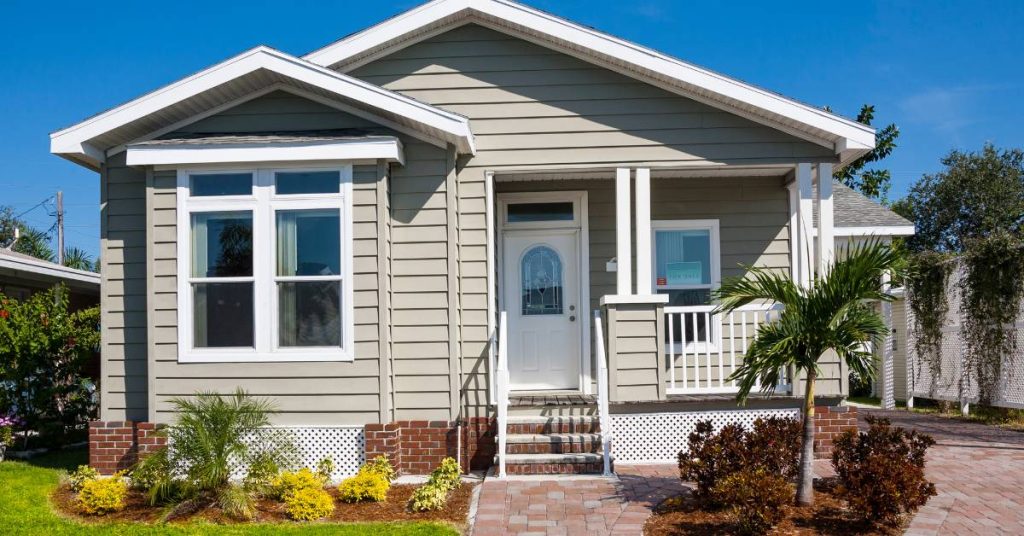Many Americans are unaware that the USDA offers two types of rural development loans. It pays to know which one you are eligible for early on, so you don’t waste time applying for the wrong one.
In this article, we will break down the differences between guaranteed and direct USDA loans for you. By the end of the article, you’ll have a good idea of which type of loan suits your situation the best.
USDA Home Loans: Guaranteed vs Direct USDA Loan
There are two types of USDA loans that you can choose to apply for USDA guaranteed loans or direct loans. Given some similarities, you may easily confuse one for the other. But what is the difference between USDA guaranteed and direct loans?
Here are some key differences that you should know about.
USDA Guaranteed Loans
The first type of loan you can apply for via the USDA is the guaranteed loan, the more sought after between the two. This type is backed by the federal government, so you can be protected against default. However, a private lender provides it.
Given the federal government’s backing, USDA lenders can offer lower rates to borrowers. This makes it easier for borrowers to find affordable housing options in rural areas.
Generally, section 502 guaranteed rural housing loan program requirements include:
- Income eligibility: This loan is available for low- to medium-income families, particularly those who can’t make over 115% of an area’s median income.
- Occupancy rule: Borrowers must make the loan-backed home their primary residence.
- Be a U.S. Citizen, non-citizen national, or Qualified Alien
USDA Direct Loans
USDA will be the lender for direct loans, so you don’t need to go through a private lender. This mainly aims to aid low-income borrowers who own rural homes. While it’s less available and less popular, it’s still possible to get via the USDA.
What Is the Difference Between Direct and Guaranteed USDA loans?
USDA Guaranteed Loan
- Terms: The available terms for USDA guaranteed loans include a 30-year option with a fixed rate option. The private lender will provide the interest rate, depending on your loan application.
- Credit: It’s recommended that borrowers have a credit score of 620 to apply. If you have a score 620 or higher, you may be considered for the streamlined credit analysis connected to this type of loan. However, on top of this, borrowers must also meet the credit requirement set by the private lender for a successful application. Also, the USDA usually requires borrowers to have a debt-to-income ratio of 41% or under.
- Income: Guaranteed loans are aimed at helping low to medium-income borrowers. For this, borrowers can only have an income of up to 115% of the area’s median income.
- Rates: For guaranteed loans, fixed interest rates are determined by the private lender. These are usually based on factors the lenders need to consider.
- Fees: Borrowers need to get two types of mortgage insurance: a guarantee fee paid upfront and an annual mortgage insurance premium included in the monthly mortgage payments.
USDA Direct Loan
- Terms: Direct loans come with loan terms of either 33 or 38 years. Your income level will determine which term you qualify for. Additionally, the USDA will determine the interest rate for your direct loan.
- Credit: Borrowers applying for a USDA direct loan don’t have strict credit guidelines to worry about. However, borrowers need to prove that they have the desire to repay the loan and the ability to make monthly payments for it.
- Income: Direct loans are aimed at low-income borrowers. As such, the base income of the applicant should be between 50% to 80% of the area’s median income. The limits per area may vary, but they are usually lower than what’s stipulated for USDA guaranteed loans.
- Rates: For direct loans, the USDA provides a fixed rate based on the market rate during loan approval or closing, whichever is lower.
- Fees: There’s no mortgage insurance requirement for direct loans.
While there are stark differences between the two, the types of properties you can use the loans for are fairly similar. The property types you can use them for include:
- Existing homes
- New construction
- Proposed construction
- Modular
- PUD
- Condominiums under certain criteria
- New, manufactured homes
Guaranteed Rural Housing Loan vs Direct Rural Housing Loan: Pros and Cons
When applying for a loan, whether it be an FHA loan or one of the two USDA loans, you need to consider its advantages and drawbacks. It’s a consideration you need to make so that you will know if the loan is a good fit for you.
Pros and Cons of Guaranteed Loans
Pros:
- No downpayment required
- A wide array of property types
- The loan includes lending fees and closing costs
- Gift funds, grants, and other concessions are allowed to be used.
- Costs for repair and remodeling can be “rolled into” the loan.
- There are minimal credit score requirements.
Cons:
- You need to keep geographical requirements in mind. This is only available in rural areas.
- It is only available for acquiring primary residences.
- While refinancing is possible, the limitations are strict, so it can be challenging.
Pros and Cons of Direct Loans
Pros:
- You don’t have to worry about a downpayment.
- You can use the loan funds to build, repair, renovate, and even relocate a home.
- It comes with low-interest rates.
- Mortgage payback periods can be extended.
- The credit score requirements are minimal.
Cons:
- You need to consider geographical requirements since USDA loans target rural development.
- The loan-funded home needs to be your primary residence.
- Refinancing is possible, but the USDA has strict limitations for it.
Application Process
So, how do you apply for a rural development guaranteed mortgage loan or a direct loan? You must first find out if you’re eligible for either of them. You can refer to the USDA official website to know whether you qualify.
The application submission varies for USDA loans: direct vs guaranteed.
Direct loan borrowers can submit their applications directly to their local Rural Development Office.
Meanwhile, borrowers of guaranteed loans can directly apply with a lender. The lender will submit the underwritten application file to GUS to be approved.
Taking the Right Steps to Get Your Loan Approved

While there are many similarities between USDA’s guaranteed and direct loans, learning their differences is crucial for an applicant. There is definitely one that is better suited for your current situation. Our above guide will be immensely helpful in knowing which one that is.
Plan your application, work on your eligibility, and you’ll have no issues in getting your loan approved and closed.
If you have any questions about USDA loans, eligibility, and other requirements, do not hesitate to contact us.
Frequently Asked Questions:
Do USDA loans have lower interest rates?
Yes, they do. Since these loans are backed by the federal government, borrowers can enjoy lower interest rates from lenders.
What offers a lower interest rate, direct or guaranteed USDA loans?
While both types of USDA loans enjoy lower interest rates compared to FHA loans, it is hard to say which offers a lower interest rate as they are subject to change monthly. The rate you get will ultimately depend on the time your loan is approved.
For direct USDA loans, the interest rate is fixed for the duration of the loan term. Meanwhile, guaranteed USDA loan interest rates are fixed at the lender’s market rate.
If you want to know the current USDA loan interest rate, please contact us for an up-to-date quote.
Can I have a USDA loan and an FHA loan at the same time?
Yes, it is possible to have multiple loans at the same time like the USDA Loan and FHA Loan. However, the rules of the loans still apply – the primary residence rule in particular. It is imperative that you use these homes are your primary residence. Otherwise, your loan might not get approved.
Can guaranteed and direct rural housing loans be refinanced?
Yes, both of them can be refinanced. However, the USDA has strict refinancing limits imposed on both loans, so it may be difficult to get approved.
Why would USDA deny a loan?
A borrower needs to have all the qualifications. If their application is lacking, the USDA may refuse their loan application. Usual reasons may include undisclosed debt, too much or unverifiable income, and unmet geographical requirements.
How long does it take for USDA to approve a loan?
From signing your purchase agreement, the USDA may take anywhere from 30 to 45 days to approve your loan.






